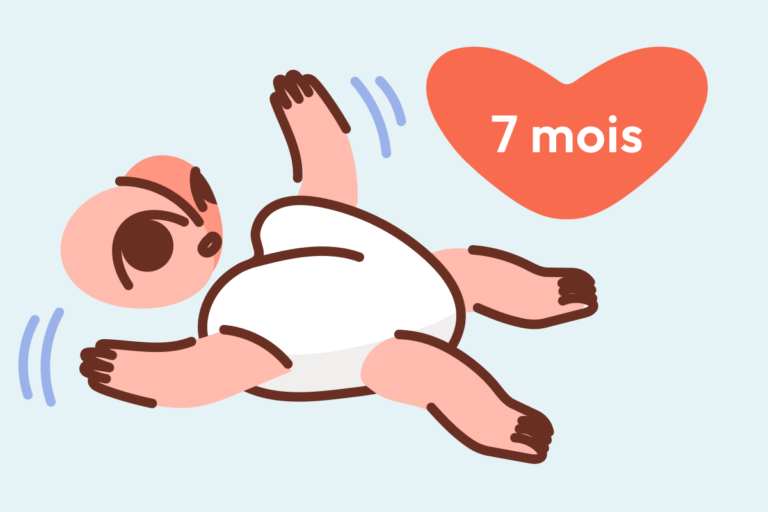Moments of feeding—a baby cradled close, a mother’s heartbeat syncing with gentle suckling—can be deeply moving. Yet, the serene image fades quickly when breastfeeding pain surfaces: those first pinpricks, lingering aches, or sudden, electric shocks at every latch. Many parents question if discomfort is a normal part of nourishing their child, and when pain hints at something more serious. If your mind is swirling with questions—Why does my chest throb after feeds? Will this ever get easier? Where can I find real solutions?—rest assured: effective, evidence-based answers exist, shaped by both lived experience and science. Within the multifaceted world of breastfeeding pain, we’ll touch on root causes, practical prevention methods, the emotional landscape, innovative remedies, and the vital role of trusty medical support.
Understanding What Causes Breastfeeding Pain
Incorrect Positioning and Latch: Exploring the First Link
A poorly positioned baby, chin adrift from the breast, mouth puckered on the tip rather than the areola, can spell instant trouble. Suddenly, sore nipples emerge: redness, cracks, sometimes bleeding. Why does this happen? When the nipple sits too close to the lips, rather than deep toward the soft palate, every suction yanks delicate tissue, inflaming nerve endings. Good positioning—football hold, cross-cradle, or side-lying—shifts the dynamic. Pillows under elbows, the baby’s body aligned, can transform those painful tugs into gentle rhythm. And always, break suction with a pinky to avoid further trauma; abrupt detachment compounds damage.
Sucking Difficulties and Suction Problems: Tiny Anatomy, Big Impact
Some newborns struggle beyond position alone. Tightly tethered tongues or lips—commonly called tongue-tie or lip-tie (medically referred to as ankyloglossia)—curtail the tongue’s movement, making a deep latch elusive. This restriction leads to a pinching sensation, compromised milk transfer, and, over time, persistent breastfeeding pain. Manifestations can include fussiness at the breast, audible clicking, or a baby who slips off during feeds.
Engorgement, Blocked Ducts, and Inflammation: Swelling and Pressure
When milk production ramps up in those early days, a “floodgate” effect can leave the breasts engorged—tense, shiny skin, even sharp stabbing pains. Incomplete drainage—skipped feeds, improper emptying—invites blocked milk ducts (lumps, localized redness). If bacteria enter via cracks or fissures, the risk of mastitis (localized infection) climbs: throbbing pain, fever, chills, and systemic illness. Warning: persistent lumps, pronounced swelling, or changes in breast color demand swift medical assessment.
Infections and Other Internal Origins: Going Below the Surface
Sometimes, pain outlasts all corrections—prompting the need to dig deeper. Thrush, a yeast infection, thrives in warm, moist tissue: burning, itching, shiny or flaky nipples, baby with white patches inside the mouth. Bacterial infections arise from scratches or overuse, requiring prompt antibiotic treatment. Another culprit? Vasospasm—blood vessel constriction leading to color changes (white or purple nipples), and a sharp pain triggered by temperature shifts.
Less Common Triggers and Irritants
Some parents, due to anatomical variations (flat or inverted nipples), underlying conditions like eczema or Raynaud’s syndrome (exaggerated blood vessel reactions), or post-surgical changes, are predisposed to discomfort. Environmental irritants—laundry detergents, poorly fitting bras, nipple creams—can provoke allergic or contact dermatitis, fueling further breastfeeding pain.
Recognizing and Responding to Breastfeeding Pain: Warning Flags and Self-Checks
You may wonder, is any pain “normal”? Brief sensitivity can accompany the first days, but sharp aches, persistent pain, or systemic symptoms—redness, visible cracks, swelling, fever—signal something more. Observing the evolution of any discomfort is key: does it intensify with every feed? Linger into the night? Change in quality? These nuances arm you with essential information for medical providers and lactation consultants. If uncertainty creeps in, or if standard tweaks don’t ease the pain, seeking evaluation promptly is wise.
Breastfeeding Pain: Its Ripple Effect on Emotional Well-being
Tears during sessions. A racing heart as feeding time approaches. Some parents wrestle not only with physical discomfort, but also guilt, self-doubt, sadness, or even the early urge to wean. Underlying breastfeeding pain can cast a shadow over what many hoped would be a joyous connection—sometimes leading to mood disruptions or symptoms of postpartum depression. Recognizing these emotional patterns matters; supportive conversations and professional reassurance ease the weight considerably.
Proactive Prevention: Habits That Guard Against Pain
Bolstering comfort begins with consistent positioning and perfecting the latch. Here’s how:
- Invite your baby’s mouth to encompass a generous portion of the areola—avoid “lollipop” latching.
- Ensure flared lips and chin contact; babies should remain tummy-to-mum.
- Use strategic supports—pillows, rolled towels—for ergonomics and stamina.
- Cycle through different feeding holds, tracking which feel natural and effective.
- Gently cleanse with water, skip soaps, and air dry to preserve the delicate skin barrier.
- Pure breast milk dabbed after feeds, or a thin layer of lanolin, promotes healing of minor cracks.
- Offer milk frequently, and at the earliest feeding cues; avoid long intervals, as engorgement paves the way for further breastfeeding pain.
- At the first sign of swelling, apply warmth, use gentle massage, and express milk as needed.
- Delay bottles and pacifiers until feeding is firmly established—early introduction may trigger latch confusion.
- When in doubt or pain escalates, prioritize consultation with a lactation consultant, midwife, or health provider.
Practical Relief: What Actually Helps When Pain Strikes?
Soothing Techniques and Simple Fixes
- Warm compresses applied prior to feeding soften the breast, prompting let-down and reducing tightness.
- Use cold compresses post-feed for swelling; rotate as needed to manage inflammation.
- Vary feeding positions—sometimes, a simple switch relieves pressure on damaged areas.
- For sore or cracked nipples, medical-grade lanolin cream or your own breast milk soothes and protects.
- Under guidance, nipple shields can buffer very sensitive skin, though careful supervision prevents secondary latch issues.
Professional Insight and Community Support
Don’t hesitate to lean on professionals—lactation consultants, midwives, and peer support groups offer not just practical adjustments, but also a sense of relief that your challenges are valid and surmountable. Addressing problems swiftly can save you from weeks of compounded breastfeeding pain.
Targeted Aids and Suitable Products
Specialized breast pads (gel, hydrogel), breast shells for ventilation, and creams tailored for breastfeeding all provide moments of respite. Persistent pain? These aids might tip the scales toward healing, especially when backed by clinical input.
When Infections or Special Conditions Arise
- Mastitis (bacterial) demands antibiotics—continuing to nurse helps drain blocked ducts.
- Fungal infections require both mother and baby to receive antifungal treatment; every surface or object (breast pump, pacifiers) must be sanitized.
- For vasospasm, using heat and moderating caffeine offer relief.
- Blocked ducts respond to frequency, massage, and positional tweaks.
- Eczema or dermatitis? Weed out irritants and, with medical guidance, apply safe emollients.
- Suspected tongue-tie? A brief specialist review and, when necessary, a targeted procedure can be transformative.
Breastfeeding Positions: A Versatile Toolkit Against Pain
Stuck in a rut of discomfort? Exploring alternatives breathes new life into sessions. Examples:
- Cradle hold: Classic, supportive, ideal for infants progressing in control.
- Cross-cradle hold: Allows optimal head guidance, perfect for delicate latching.
- Side-lying: Restful for both baby and parent; valuable post-cesarean.
- Football (rugby) hold: Tucks baby beneath the arm—especially handy for larger breasts or after surgery.
- Laid-back (reclining): Utilizes gravity, opens airway, and deepens latch.
Always bring your baby to the breast—not the other way around—and let gravity lend a hand. Pillows adjust alignment, and every switch can be a game changer for ongoing breastfeeding pain.
Emotional Support: Sustaining Parental Confidence Through Challenge
Staying afloat isn’t easy when each feeding is shadowed by discomfort. Emotional support—an understanding partner, attentive friends, reputable peer groups—restores faith in your abilities and perspective on setbacks. Self-kindness, mindful breaks, and delegating or pumping when pain peaks are sometimes all it takes to transform a day. If overwhelm persists, discussing exclusive pumping, temporary supplementation, or additional strategies with your provider ensures ongoing nourishment and emotional safety for both you and your baby.
Myths, Facts, and Nuanced Insights
Some discomfort at the outset? Possible. Persistent or severe breastfeeding pain? Always signals a need for adjustment or further investigation—never dismiss. Skin doesn’t “toughen up” through repeated trauma; injury only compounds risk. Feeding on-demand isn’t just convenient but preventative, lessening buildup and tissue pressure. Bottles or pacifiers too early? Can muddle latching success.
Prompt, informed adjustments and empathic support make it rare for parents to have to forgo breastfeeding solely due to pain. Most journeys, with the right approach, improve.
Key Takeaways
- Pain is a signal, not a rite of passage. Watch closely for latch issues, sucking concerns, infection, engorgement, or anatomic differences.
- The foundation of breastfeeding comfort: ideal position, deep latch, and vigilance for early warning signs.
- Methods such as position changes, feeding frequency, medical assessment, and specialized aids can rapidly reduce breastfeeding pain.
- Emotional reassurance and consistent support matter as much as clinical fixes.
- Evidence-backed sources (reputable guides, tailored apps) empower you for ongoing self-advocacy and learning.
- If discomfort arises, don’t delay—resources and professional assistance transform hurdles into progress. For customized support and free child health questionnaires, discover the Heloa app today.
Questions Parents Ask
Can breastfeeding pain affect milk supply?
Experiencing pain while nursing can sometimes make feeds shorter or less frequent, which may influence milk production. If discomfort leads you to nurse less often, votre corps risque de produire moins de lait avec le temps. Rassurez-vous, des solutions existent : en ajustant la position, en sollicitant un accompagnement bienveillant et en continuant à stimuler la lactation par des extractions ou des tirages réguliers, la grande majorité des parents arrivent à maintenir leur production de lait. Si l’inquiétude persiste, il importe de consulter une consultante en lactation ou un professionnel de santé à l’écoute de vos besoins.
How long does breastfeeding pain usually last?
Une gêne légère peut apparaître dans les premiers jours, le temps que votre bébé et vous appreniez à téter ensemble. Généralement, cette sensibilité s’atténue après une à deux semaines. Si la douleur perdure ou s’intensifie, ce n’est pas inévitable : il convient d’identifier la cause (position, frenulum, infection…) et d’agir tôt pour retrouver des tétées plus sereines. Rassurez-vous, nombre de parents traversent cette étape, et des ressources existent pour que l’allaitement devienne une expérience plus confortable et agréable.
Are there any home remedies for breastfeeding pain?
Plusieurs astuces peuvent aider à apaiser la douleur à la maison : appliquer une compresse chaude avant la tétée ou fraîche après, laisser sécher quelques gouttes de lait maternel sur le mamelon, et utiliser des crèmes spécialement conçues pour l’allaitement sont des gestes simples pouvant soulager. Pensez aussi à varier les positions de tétée pour limiter la pression sur les zones sensibles. Si la douleur persiste malgré ces conseils, il est nécessaire de demander un accompagnement adapté pour retrouver du confort au quotidien.

Further reading:









